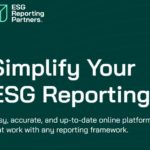Data on the sustainability performance of companies including carbon emissions, water use and human rights infringements can now be easily revealed thanks to a new format for tagging data in sustainability reports, being launched today (Thursday 8 March 2012) by the Global Reporting Initiative (GRI). Sustainability experts say the new format will help people find information hidden in sustainability reports much more quickly and easily.
According to recent research, 95 percent of the worlds 250 biggest companies now report their sustainability performance. GRI produces a comprehensive sustainability reporting framework that is widely used around the world. The Framework, which includes the Sustainability Reporting Guidelines, features indicators that organizations can use to measure and report their sustainability performance.
Today, GRI launches a new XBRL taxonomy for tagging sustainability data in reports, making it easier for report users including regulators, investors and analysts to find and analyze data. The GRI Taxonomy which is available for free was developed in collaboration with Deloitte Netherlands. A team of experts from different stakeholder communities reviewed the draft taxonomy before the Public Comment Period.
XBRL stands for eXtensible Business Reporting Language. An open-source tagging language similar to XML, it is used worldwide for tagging data in financial reports. Todays taxonomy will enable companies and other organizations to use XBRL to improve their sustainability reporting and make the data in their reports more accessible.
Nelmara Arbex, Deputy Chief Executive of the Global Reporting Initiative, said: Todays new taxonomy is a major step forward in making sustainability data available to society. Many companies already use XBRL to tag their financial performance data; the GRI Taxonomy means that companies can tag their sustainability data, making it easily accessible for people who want to find information in the report.
Cees de Boer, CFO and COO of Deloitte Netherlands, which collaborated with GRI on the Taxonomy, said: With the release of the GRI Taxonomy, many organizations can benefit from a well-defined, structured format for collecting and disseminating sustainability information. It enables both reporters and regulators to exchange sustainability data electronically and inform stakeholders with consistent and high quality information. It can be a major leap in the interactive use of sustainability data and integrating financial and non-financial reporting.
Tagging sustainability data in reports requires a piece of software. Some regulators including stock exchanges and governments use various tools to search for data and compare the performance of different companies.
Today, GRI also launches a Voluntary Filing Program, where reporters that use the new GRI Taxonomy can promote their tagged reports on GRIs website.
Nelmara Arbex added: Now is the time for companies to pilot this new taxonomy. GRI expects that regulators will be increasingly interested in tagged data, so by starting to use the GRI Taxonomy now in the sustainability reporting process, companies can get ready for future requirements.



